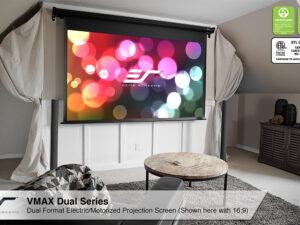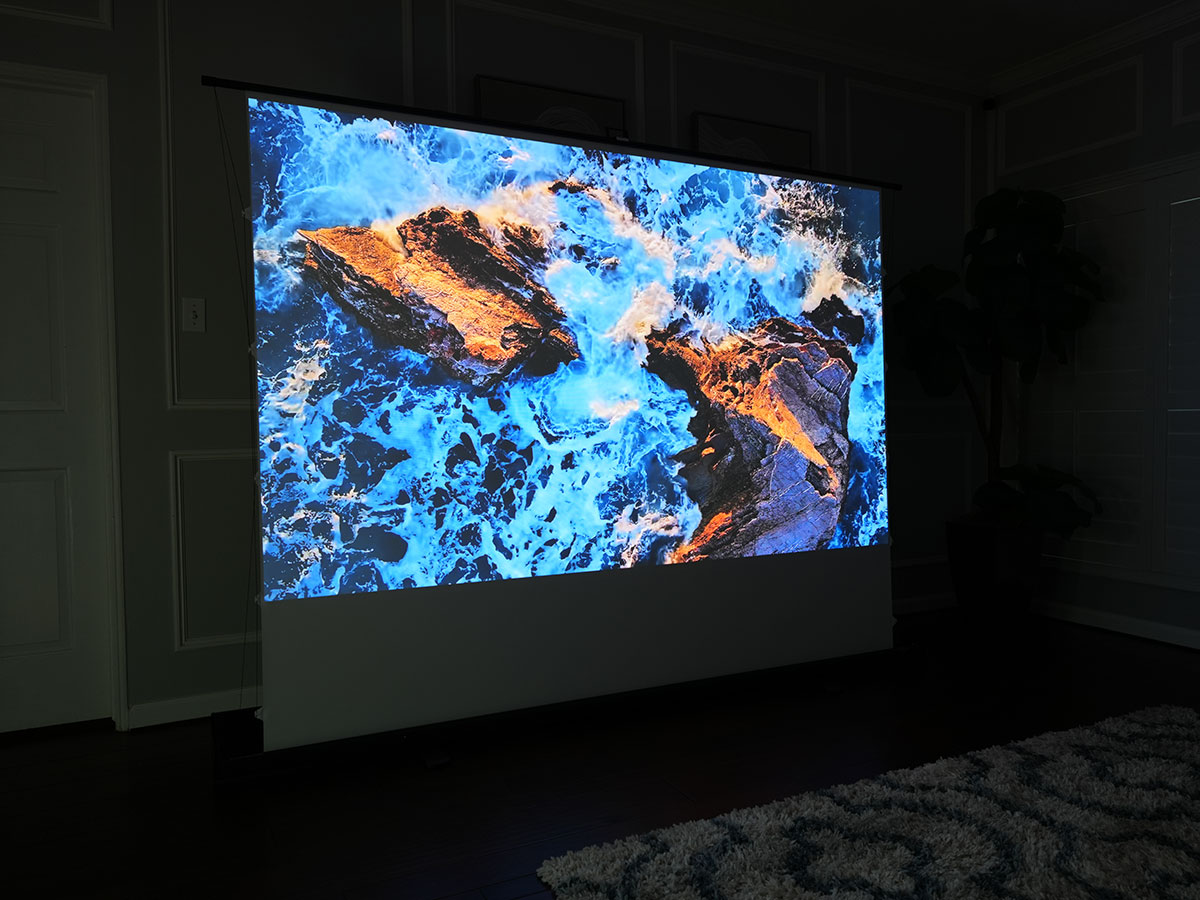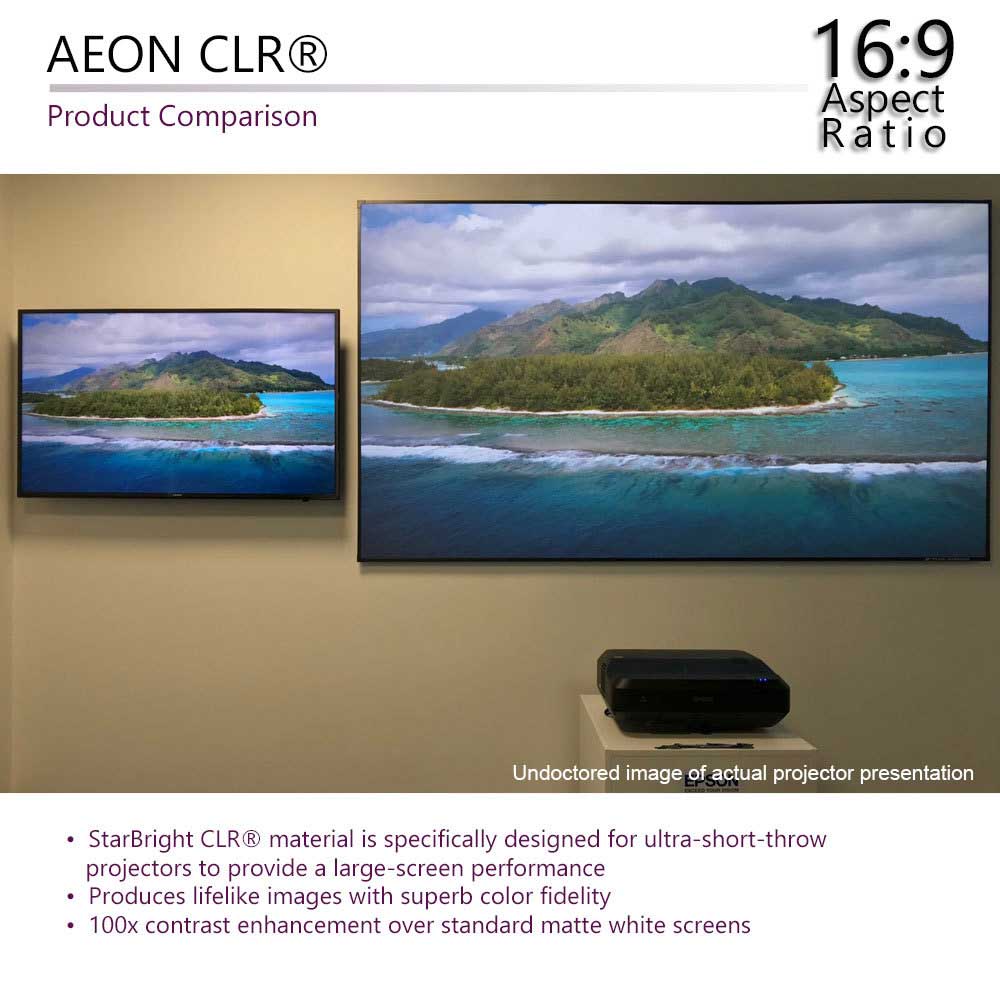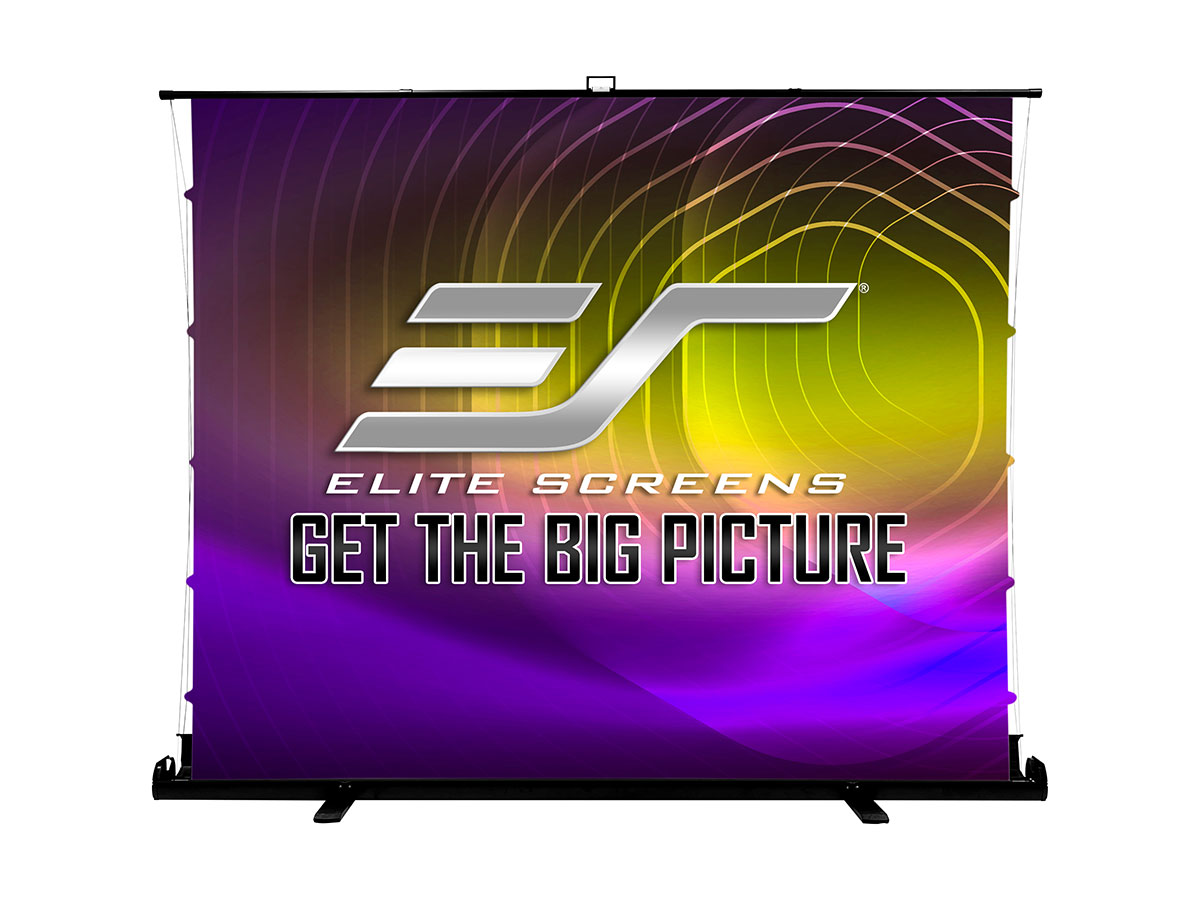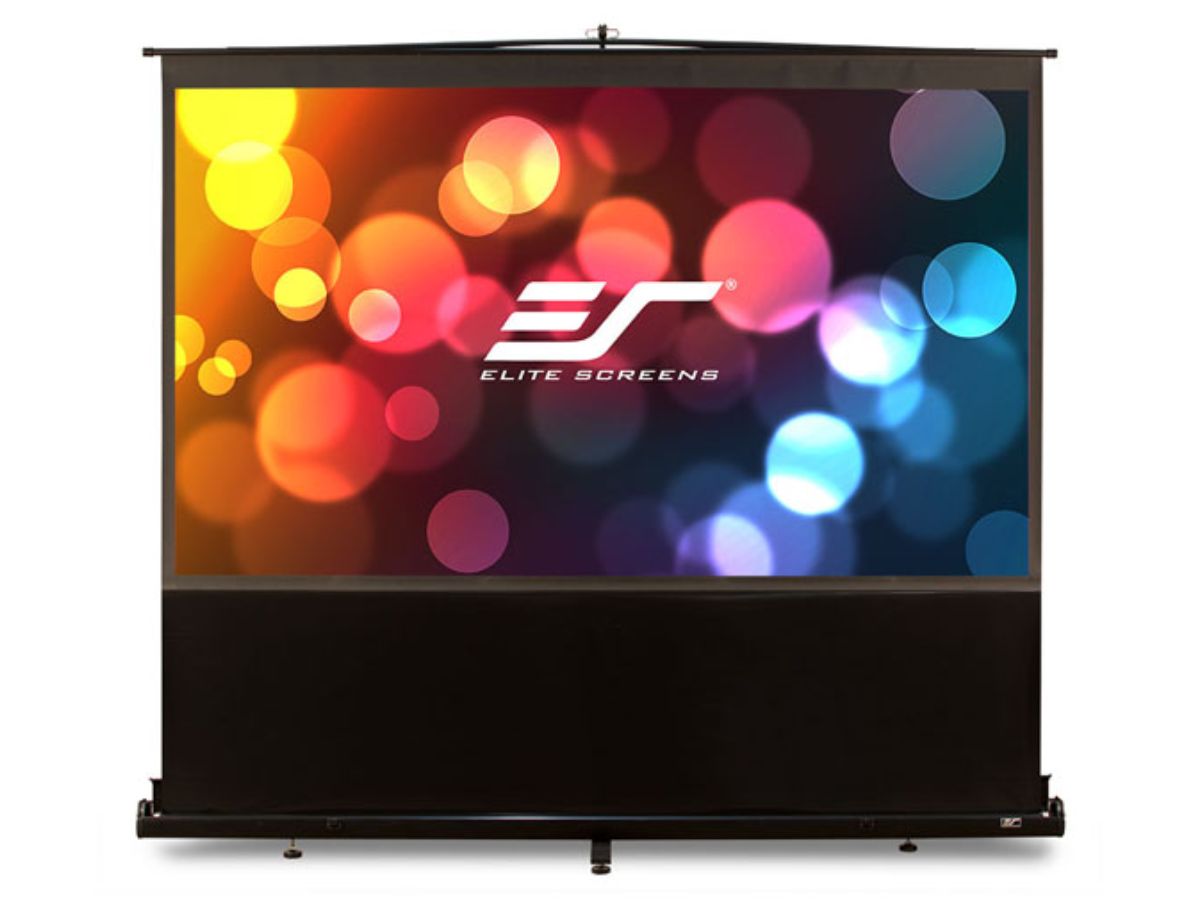Your HDTV Projector can change to Cinemascope but your screen doesn’t? …or does it?
By now, most know the difference between what an HDTV (16:9) and a Cinemascope or “widescreen” (2.35:1) aspect ratio is. If not, an aspect ratio is essentially the shape of your television or projection screen. The numbers indicate the ratio of width to height measurement. For example, with 16:9, there will be 16 units of width for every 9 equal units of height. Cinemascope is even wider with 2.35 units of width for every 1 unit of height. The HDTV aspect ratio is pretty much standard for all of the television sets made today. However, the wider aspect ratio (Cinemascope) fits the wide formats of most movies. Love it or hate it, whenever you watch the “letterbox” edition, you are almost certainly watching a “widescreen” or Cinemascope presentation matted onto an HDTV screen. Many viewers find the “black bars” above and below the visible image to be distracting. Fortunately, AV manufacturers have been trying for years to bring custom solutions to viewers so there are a few choices to consider.
Today, virtually every HDTV projector currently being made has the ability to switch aspect ratios to something different from its native format. In the case of home theater screens, if there is any other option, it will be a cinemascope format. The question of which format you’ll see more of is entirely up to you. Some people buy a cinemascope formatted projection screen and it looks great if all you are planning to watch are movies of that format. On the other hand, HDTV is a very common format and all you have to deal with it the letterbox effect when watching films.
There are various solutions for AV enthusiasts to effectively mask their projected image on their 16:9 projection screens when running their projectors in 2.35:1 mode. These include applying your own masking, purchasing a multi-aspect ratio screen or alternating two screen materials that can accommodate the different aspect ratios.
Rules for Masking your Screen
As always, there are rules of physics with which you must abide.
- The 2.35:1 aspect ratio must footprint within the confines of the 16:9 aspect ratio. In other words, both images must be of equal width. This is how the projector will format it.
- You cannot physically tape any masking to your screen. Projector screens are specially designed to enhance picture quality and are susceptible to damage when covered by an adhesive such as tape or glue. It is also good to know that your warranty does not cover self inflicted damage such as this
The pros and cons of each method
Create a masking: In some cases, a masking may be constructed for fixed-frame screens.
This incorporates a rigid but lightweight material such as cardstock surfaced by a black Velvet fabric.
- The benefit is that it’s a relatively cost effective solution that holds in place through the friction of being stuck between the taut screen material and the frame itself.
- The drawbacks are that screen materials are not designed to come into regular contact with foreign objects will eventually stretch out the screen material. It can also leave residue on the screen. This also works for frame screens but not retractable models.
*Note: NEVER use adhesives for this. It will only ruin the screen.
Buy a Custom Auto-Masking Projection Screen:
These are specially made products designed to accommodate the various aspect ratios that projectors have.
- The benefit is that they never need to be moved or manually adjusted. Their format will change with the push of a button on your remote.
- The drawbacks are that multi-masking screens are that these are custom built as special order products at a prohibitively high cost. They are also prone to malfunction and are costly to fix.
Run two screens of different aspect ratios in tandem:
You can try to find two screens, one 16:9 and one 2.35:1 in matching widths and install them together.
- The benefit is that you will have two dedicated projection screens that can be alternated to work with whichever projector aspect ratio you are on.
- The drawbacks are that buying two screens is a pricey solution. It is also difficult to align them both let alone coordinate their drop-rise action. They will also present a depth distortion issue since there is more than 20mm of offset between the alternating projection surfaces.
- Elite’s Solution: Instead of using two screens, why not combine 2-different projection surfaces, one 16:9 and the other 2.35:1 into a single unit? This will present a 12mm spacing between the two projector materials so that depth distortion is negated. It will also be much cheaper and the screens will be coordinated since they operate off the same mother board control system. This product is called the VMAX Dual™ and there is more to read about it below.
Elite’s Solution, the VMAX Dual®
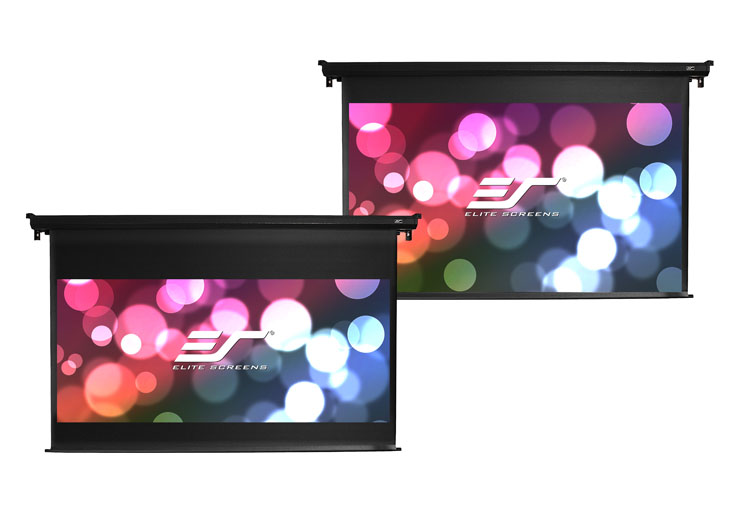
VMAX Dual® Series is an electric projection screen that actually contains a pair of alternating materials with either a 16:9 or 2.35:1 aspect ratio. It is formatted to constant image width so you could have a cheap projector with no zoom or no lens shift but the projector will line up with the screen anyway, regardless of it being on either mode. There is only a 12mm spacing between the 16:9 and 2.35:1 materials making it insufficient for depth distortion to be visibly perceived. The screen comes as a fully assembled, “plug & play” product. It is equipped with a full installation package including L brackets as well as a Radio Frequency remote control. A simple click of the button allows you to use whichever aspect ratio you need. It even has a wireless 12 volt trigger to coordinate your screen’s rise and drop with the projector’s power cycle. The VMAX Dual® is available with a standard 1.1 gain matte white material. There is also a tab-tensioned matte white variant in the form of the Vmax Tension Dual projection screen.

